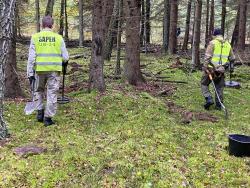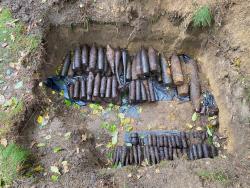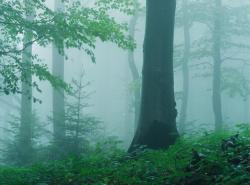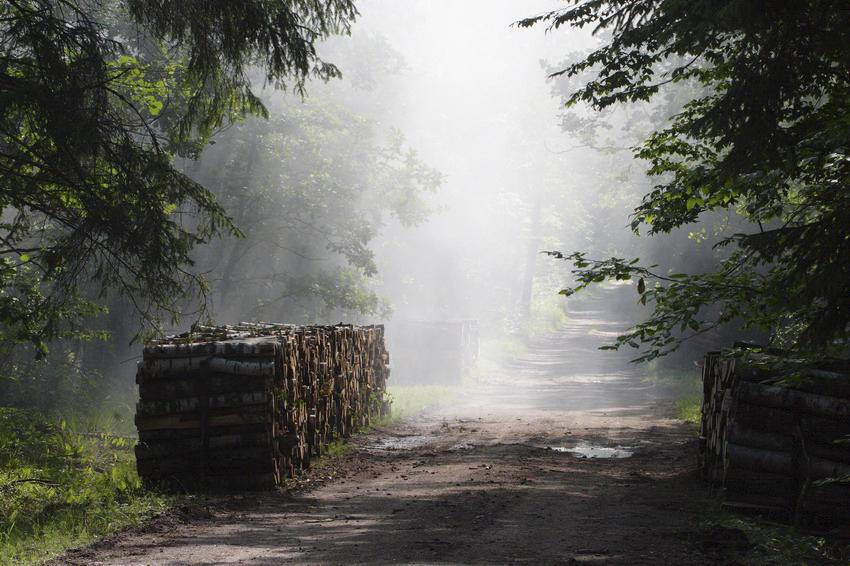 Asset Publisher
Asset Publisher
The State Forests National Forest Holding
The State Forests National Forest Holding is the largest organisation in the European Union managing forests, which belong to the State Treasury and celebrating its 90 anniversary this year.
Presently, we manage the area of one third of Poland's territory. Not long after the end of the Second World War, there was only 21 % of the area. Every year we plant 500 million of new trees, as we want Polish forests grow all the time.
Every year Polish foresters plant 500 million of trees.
85 % of nature reserves in Poland are located within the State Forests. 40 % of the forests managed by General Directorate of the State Forests are protected within the framework of European network Natura 2000. We fight against many threats: natural disasters, plaques of insects, trees' diseases, fires, pollutions, as well as poaching and vandalism.
We take care the forestry supplying the market with timber, as ecological and universal material, to be carried on in accordance with rules of balanced development (photography P.Fabjański).
One of our major tasks is making forests accessible to the society. We invite you to take advantage of these beautifully located within the forest wilderness holiday resorts, forester's lodges or guest rooms. That is for you, we create thousand kilometres of hiking trails, cycling paths or camping sites. All the above mentioned, you can find in service www.czaswlas.pl.
We also take care the forestry supplying the market with timber, as ecological and universal material, to be carried on in accordance with rules of balanced development. We obtain over 30 million of cubic meters of wood annually, twice as much as at the beginning of the nineties of the XX century.
Despite of this, the average of wood abundance per hectare of our forests is one fourth bigger than 20 years ago and 40% bigger than the average of European Union currently amounts.
In Poland in sectors connected with the forestry, there work about 375 thousand of people. It means that each 40 working Pole works in the forest.
In Poland in sectors connected with the forestry, there work about 375 thousand of people. It means that each 40 working Pole works in the forest. The sector of wood processing works out approximately 8 % of our GDP (Gross Domestic Product). Among others, thanks to the timber from the State Forests Poland is the 10 largest producer of furniture in the world, and the 4 largest furniture exporter.
The State Forests employ 25 thousand people. That way we are the 9 biggest employer in Poland. Among the largest companies in our country it takes 22 place in respect of its incomes and 11 place in respect of its profits. The value of assets, we manage, reaches 300 million zl. If we add social values, it will be worth one billion zlotych. We do not use money from the budget, but we earn money on our own to support the business. In spite of the financial crisis, since 2002, we continuously note down profits. Moreover, we pay taxes amounting 1,3 billion zl annually.
87 % of Poles think, the foresters are competent. We willingly share our knowledge of Polish forests, of their history and of nature values with the others. We publish books, periodicals, brochures; we also administer the website www.lasy.gov.pl . For children, the youth and teachers, we prepared internet service "E-lynx' Lynx Forest" (www.erys.pl). Our staff has supported schools in field of nature education for years. We also organise many actions to let people broaden their knowledge about forest, nature and ecology.
 Asset Publisher
Asset Publisher
 Asset Publisher
Asset Publisher
SAPERZY W NADLEŚNICTWIE CZARNOBÓR
SAPERZY W NADLEŚNICTWIE CZARNOBÓR
 Saperzy szukają materiałów niebezpiecznych
Saperzy szukają materiałów niebezpiecznych
 Pociski znalezione przez saperów
Pociski znalezione przez saperów
 Samochód saperski w lesie
Samochód saperski w lesie
W dniach 19 - 23.10.2020 roku na terenie Nadleśnictwa Czarnobór zrealizowano kompleksowe prace saperskie. Obszar objęty pracami to 3,55 ha zlokalizowane na terenie leśnictwa Wilcze Doły.
Prowadzone prace należą do grupy szczególnie niebezpiecznych. W związku z powyższym, mając na uwadze bezpieczeństwo osób postronnych, na okres prowadzonych prac teren został wyłączony z możliwości swobodnego przemieszczania się przez miłośników przyrody.
Obszar na którym zaplanowano wykonanie prac saperskich zakwalifikowany został jako wyjątkowo niebezpieczny z uwagi na występowanie materiałów niebezpiecznych pochodzenia wojskowego. Zadanie zrealizowane zostało przez Cywilną Firmę Saperską US 24. W pracach uczestniczyło 6 saperów podzielonych na dwu osobowe zespoły robocze. Całością prac kierował Pan Ryszard Szuba.
Prace prowadzone na terenach leśnych polegały na wykryciu oraz podjęciu wszystkich materiałów niebezpiecznych pochodzenia wojskowego. Dodatkowo do obowiązków wykonawcy należało usuniecie innych elementów niebezpiecznych pochodzenia cywilnego. Prace realizowane przez saperów wykonywane były przy wykorzystaniu profesjonalnych wykrywaczy metalu umożliwiających wykrycie elementów metalowych do głębokości 1 m. Każdy stwierdzony sygnał wymagał rozpoznania, odkopania i podjęcia potencjalnego niewybuchu z obowiązkiem przetransportowaniem go do miejsca czasowego składowania (Tymczasowy Magazyn Materiałów Wybuchowych).
Efekt wykonach prac potwierdził słuszność decyzji o oczyszczeniu saperskim wskazanego obszaru. Podjęto ponad 200 sztuk materiałów (pocisków) rozpoznanych jako niebezpieczne i stanowiące bezpośrednie zagrożenie dla życia i zdrowia ludzi. Większość ze zidentyfikowanych pocisków to materiały pochodzące z okresu powojennego stanowiące efekt ćwiczeń bojowych jakie realizowane były na tym terenie przez wojska radzieckie. Znakomita większość podjętych materiałów to pociski artyleryjskie w różnych kalibrach: 122 mm, 105 mm, 76 mm, 75 mm oraz 56 mm. Ponad to podjęto granaty moździerzowe oraz amunicję przeciwpancerną. Wartością dodaną do znalezisk niebezpiecznych było podjęcie ponad 2 ton złomu zalegającego w środowisku naturalnym.
W dniu 23.10.2020 roku, po pozytywnej weryfikacji kontrolnej, teren został powtórnie udostępniony dla miłośników obcowania z przyrodą. Wszystkie podjęte materiały niebezpieczne przejęte zostały przez Patrol Saperski Wojska Polskiego, którego zadaniem było ich przetransportowanie i unieszkodliwienie. Ostatni akt zrealizowany został na terenie poligonu drawskiego.
Wykonane prace to kolejny krok do przywracania pełnego poziomu bezpieczeństwa na terenach leśnych. Jest to bardzo ważne zarówno dla osób wypoczywających na terenach leśnych jak również tych które uczestniczą w realizacji prac w ramach prowadzonej gospodarki leśnej.
Marcin Mieczkowski - rzecznik pasowy Nadleśnictwa Czarnobór


 fot. Paweł Fabijański
fot. Paweł Fabijański
 fot. Paweł Fabijański
fot. Paweł Fabijański
 fot. Paweł Fabijański
fot. Paweł Fabijański





